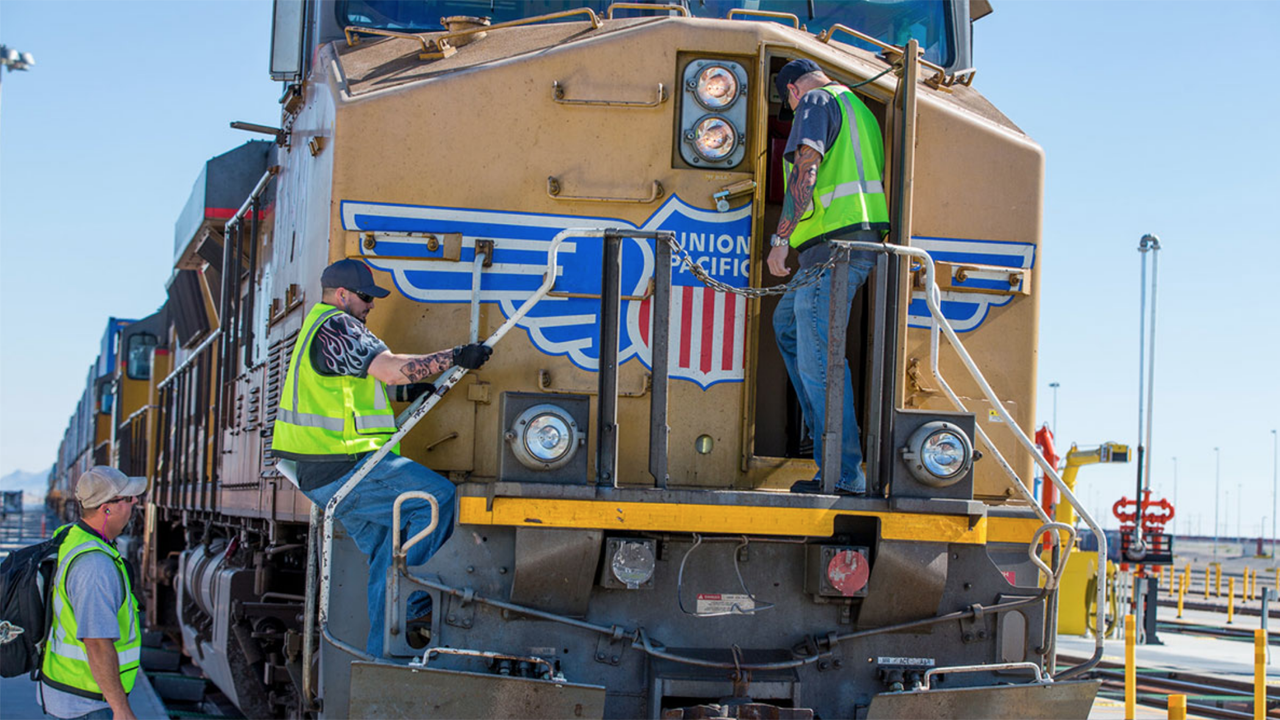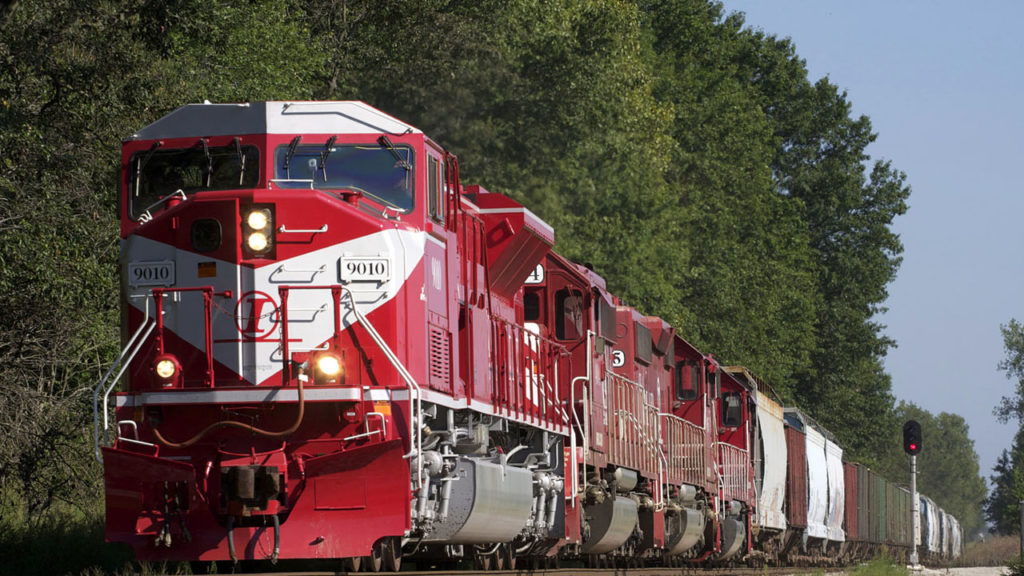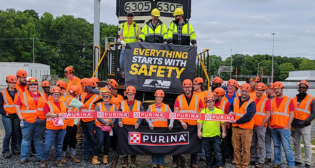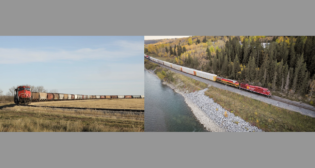
Report: UP To Run Ground-Based Conductor Pilot Program
Written by Marybeth Luczak, Executive Editor
(Photograph Courtesy of UP, via Twitter)
Union Pacific (UP) this summer will test the use of ground-based conductors in western Nebraska, between North Platte and Morrill, and in Colorado and Wyoming, between Denver and Cheyenne, according to the Associated Press.
The news service on July 17 reported that UP will continue to use two-person crews during the pilot program, which will run in August and September. The goal, AP said, “is to test out how quickly a conductor in a truck can respond to any problem compared to how quickly a conductor on the train will be able to walk back along the train to find an issue. UP still has to work out exactly how big of a territory a ground-based conductor might cover.”
UP had considered running the pilot in Nebraska earlier this year, but the International Association of Sheet Metal, Air, Rail and Transportation Workers-Transportation Division (SMART-TD) “refused to agree to the plan because it believes train conductors play a crucial safety role,” the Associated Press reported Jan. 19; at that time, the news service noted “UP executives told the Federal Railroad Administration [FRA] that their plan would have helped them determine how feasible it would be to reduce train crews down to just an engineer and might give the agency valuable information to consider as it weighs whether to issue a rule requiring two-person crews.”
SMART-TD on May 31 reported that UP and General Committee of Adjustment 953, part of the SMART-TD who work on the Class I’s Eastern District and Pacific Northwest and Idaho territories, ratified a crew-consist agreement, maintaining two-person crews.
The move followed the March 25 approval of a tentative agreement. At that time, UP said if the agreement was ratified, it would close its Section 6 Notice to redeploy conductors on this committee.
“This agreement serves to protect the train and yard service crafts and ensures these crafts as the crafts of the future,” SMART-TD Vice President Brent Leonard said during the crew-consist ratification announcement. “SMART-TD is the only transportation craft with agreements protecting their position now and into the future and does so without tying their position to that of another craft.”
According to the Associated Press’s July 17 report, SMART-TD “agreed to let Union Pacific test out ground-based conductors as long as it maintained current crew sizes and agreed to drop ongoing negotiations over reducing crew size.”
The railroad’s revival of the pilot was confirmed, the Associated Press reported, by UP General Director Network Development Jason Pinder “when he testified [July 17] against a proposed Kansas rule that would require two-person crews.”
Background on Two-Person Crews
In a July 2023 Railway Age column, “Crew-Size Edicts Threaten Small Railroads,” Capitol Hill Contributing Editor Frank N. Wilner reported that the National Transportation Safety Board has said “‘there is insufficient data to demonstrate that accidents are avoided by having a second qualified person in the [locomotive] cab.’” Additionally, Wilner wrote the FRA has said it “lacked ‘reliable or conclusive statistical data’ linking crew size to safety. Yet 13 states, relying primarily on anecdotal evidence, have enacted laws mandating two-person crews, with the list expected to grow owing to labor union lobbying.
“While these state laws do not currently affect Class I railroads with collective bargaining agreements (CBAs) specifying, for now, two-person crews, many CBAs are ripe for renegotiation. The more immediate threat of state law mandates is to the economic health of the nation’s 600-plus Class II (regional) and Class III (short line) railroads. The American Short Line and Regional Railroad Association estimates 400 small railroads now operate some trains engineer-only in the cab, with 100 not using dedicated ground-based support (conductor in a following truck, voice electronics or remote control).
“Requiring small railroads to hire a second crew member absent compelling safety justification would illogically erode already thin profit margins and flout public policy intended to foster and preserve private-sector rail operations in areas otherwise served only by truck. Small railroads succeed only through diligent cost control and operational flexibility as they lack the market power and economies of scale and density enjoyed by Class I’s.
“Forcing small railroads to hire redundant employees risks discouraging future capital investment that in the past rehabilitated thousands of miles of dilapidated track jettisoned by Class I’s, and would undermine a competitive small-railroad freight-rate structure essential to retaining and growing carload traffic.
“Significantly, small railroads, responsible for maintenance and renewal of their privately owned rights-of-way, compete against truckers utilizing government constructed and maintained highways, and who underpay their user-charge cost responsibility for the pavement and bridge damage big rigs cause.

“Regional Indiana Rail Road (INRD), which also operates in Illinois and has one-person crew operations with an exemplary safety record, successfully challenged in federal court the Illinois crew size mandate, which may explain why other states haven’t enforced their crew size laws. [Indiana Rail Road v. Illinois Commerce Commission, 576 F. Supp. 3d 571 (N.D. Ill. 2021)].
“INRD contended that the Illinois statute is preempted by federal laws—the 1970 Federal Rail Safety Act (FRSA), the 1973 Regional Rail Reorganization (3-R) Act and the 1995 ICC Termination Act (ICCTA)—that speak to nationally uniform laws and regulations so as not unnecessarily to burden interstate commerce. The court focused only on the 3-R Act in striking down the Illinois statute.
“The court ruled Congress intended the 3-R Act to solve a rail crisis in the Northeast and Midwest—its keystone the successful creation of an economically viable Conrail—by restricting, then, and now, 17 states (including Illinois), the District of Columbia and portions of contiguous states (‘the region’) from ‘requiring any railroad in the region to staff crews of a specified size.’
“Whether more than 250 other small railroads operating in the 3-R Act-defined region are similarly insulated could depend on other federal court interpretations as the INRD decision was specific to Illinois state law. As for some 350 small railroads outside the 3-R Act defined region, federal courts would be asked to focus on the FRSA and/or ICCTA. (Some railroads have operations in both the 3-R Act region and outside it.)
“All state crew-size laws will be expressly preempted, however, if Congress or the FRA impose a uniform nationwide rule, which similarly threatens small railroad survival.
“A two-crew-member mandate moving through Congress for now makes no mention of small railroads and appears aimed at sheltering rail labor from collectively bargaining over crew size.
“Separately, the FRA says it will promulgate before March 2024 a nationwide minimum crew size regulation, with speculation it will provide case-by-case exceptions for small railroads, with the carrier bearing the burden of proof.
“Railroads large and small oppose federal and state mandates as, historically, crew size has been determined on unionized railroads through collective bargaining, and on non-union railroads through collaboration with operating employees to assess safety and customer service factors.



